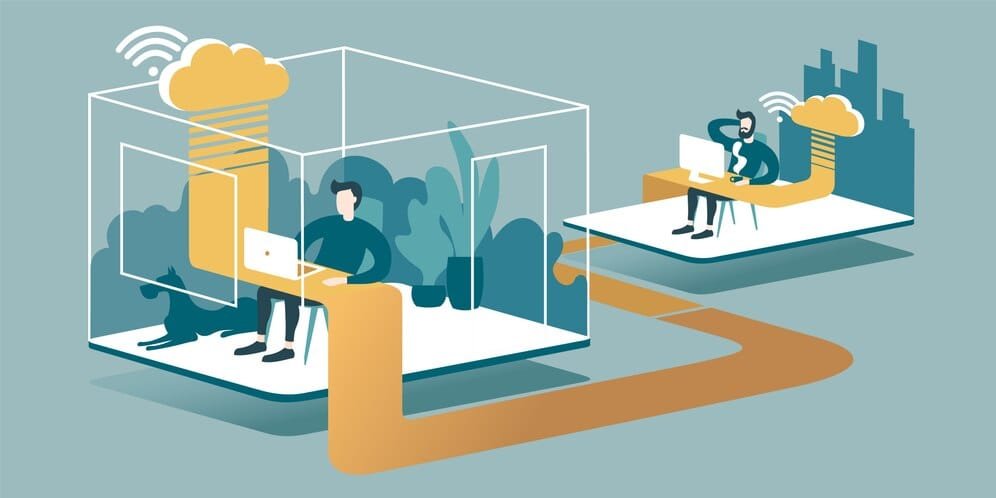The drone of the network — that constant, reassuring thrum — is the heart of modern business. It’s the unseen artery feeding lifeblood through every transaction, every note, every essential system. But if that heartbeat were to stutter? What if that hum suddenly went sinister, becoming crackling static?
Picture this: you are Sarah, the head of security for a major telco. For years you’ve developed strong protections against cyber threats, holding back the digital wolves at the door. You’ve fixed vulnerabilities, built firewalls and trained your team to identify phishing scams faster than a hacker can type. You feel secure. And whispers in your ear – first to you – about a new breed of attack, a new attack type that bypass and evades all of your carefully weaponized defenses, aiming straight at the heart of your fixed-line network. It’s not a novel exploit in and of itself, it’s something much more insidious, something hiding in the shadows of your infrastructure, waiting for the right moment to pounce.
This isn’t some hyper-futuristic dystopian nightmare, it’s the stark reality that millions of Fixed-Line Operators face today. The cyber threat landscape isn’t just changing — it’s metastasizing. Attacks are more advanced, more targeted and far more destructive than ever. The monetary losses are substantial, but the reputational harm? That’s irreversible. Loss of customer trust, regulatory fines, and potential legal battles — the aftermath can destroy a business.
This is more than about data protection; it’s about protecting the very fabric of our interconnected world. It’s about protecting critical infrastructure, preserving national security and avoiding the mayhem a compromised network can cause. So, are you truly prepared? Or is your fixed-line network a sitting target for the next round of more sophisticated attacks? Let’s get to the shocking truth and help prepare you, the way you need to be prepared to survive.
That’s where the network security market, a battleground, but more than that, a maelstrom, a swirling vortex of forces, comes in. Picture this: a digital sea, wide and unrelenting, where pirates (cybercriminals) lie in wait, and brave voyagers (security companies) steer a ship through stormy seas. Having a feel for the currents – the trends – is key to survival, and to achievement.

Positive Trends: The Increasing Tide
- The Rise of the Cloud: The shift to cloud computing is a wave, not a passing fad. And that’s a huge opportunity. Not only are companies like AWS, Azure, and Google Cloud offering up infrastructure, but just as sophisticated security services, creating a lovely market for cloud security solutions. You can think of it as crafting fortified islands in this ocean of digital data that provide safe harbor for information. The key for businesses? Adopt cloud-native security architectures and choose cloud vendors who build with security in mind.
- AI As Attack WedgMount: Artificial intelligence is no longer a dream of the future; it’s the weapon of choice for fighting cybercrime. Breach detection systems powered by AI technologies have the ability to detect irregularities and react to breaches in real-time, a function lightyears ahead of human ability. One example is Darktrace, which employs AI to autonomously identify and react to threats, stopping attacks before they cause real harm. For businesses, the key challenge is to start investing in AI-based security solutions and using their predictive capabilities to stay ahead of the developing threats.
- The ascent of zero trust: The classic castle-and-moat security model is collapsing. Zero Trust which does not rely on implicit trust is being adopted. It validates each user, each device, before granting access, greatly limiting the potential for attack. Zero Trust is powered by a set of organizations as well, and Okta — our primary identity and access management solution provider — is pushing Zero Trust to the forefront by making identity and access management solutions available as a pillar of Zero Trust principles. Businesses need to move away from a perimeter-based security model, and toward a zero-trust security model, one that provides continuous verification and granular access control.
Adverse Trends: Gathering Storm Clouds
- Skills gap: there is a dire shortage of cybersecurity professionals. This leaves a vulnerability, a glaring gap in the defenses. Finding and retaining qualified cybersecurity experts is difficult for many companies. This is not just a problem; this is a crisis that puts businesses at risk.” Combating the scarcity of talent is a matter of investing heavily in the training of preferred candidates, establishing liaisons with universities, and providing attractive salary/benefit packages.
- As more years go by, the evolution of technology has led to the evolution of cyber attacks. Ransomware, supply chain compromise and Advanced Persistent Threat (APT) are now routine. This requires active threat hunting and vulnerability management as well as solid incident response plans.
- The Growing Attack Surface: The growing use of IoT devices, and the blending of work and personal devices, both dramatically broaden the attack surface. Each connected device is an entry point for attackers. The need of the hour is a complete security strategy that governs all devices and systems, and businesses should start implementing strong authentication and access control mechanisms that span all devices and personnel.
Navigating the Storm:
It’s not a smooth path that leads to the future of network security; it’s an ecosystem that is constantly changing. Organizations that comprehend these trends, drive innovation, and build security talent will not only survive — but thrive. Building better boats, arming them with the heavy guns in the form of AI and cloud security, and sailing into a safer tomorrow. It won’t be easy, but those who weather the storm will reap great rewards.
Health care: Picture Sarah, a frazzled hospital administrator, staring at a flashing alert. An unauthorized access attempt — a digital intruder attempting to penetrate the patient database, a castle filled with the most sensitive personal data. Their multi layered security system — firewalls as steel gates, intrusion detection systems as vigilant guards, and regular security audits as thorough inspections — sprang into action. An attempt to breach the facility was stopped and nothing was taken, however this is only a portion of the regular battle against digital dangers in the wellbeing business, which are high-paying targets. THIS MODERN THREAT PHENOMENONUndoubtedly, be it a corporation or a health care organization, it highlights the necessity to constantly invest in strong and tightly secured environment to keep patient confidentiality and operational integrity intact.
Technology: Mark, a cybersecurity architect at a Silicon Valley tech giant, sensed the pressure was building. Looming was a significant software update, a tricky puzzle of code poised to be released to millions. This orchestration meant final security rehearsals with heavy penetration testing, then locking access behind multi-factor authentication like an impenetrable safe, all monitored in real time by threat monitoring tools like alerting sentries. The rollout was largely without incident; millions of users updated seamlessly, a sign of careful advance planning for the network security. Mark’s squad the next day toasted a hard-won victory, but knew the war was long from over.
Automotives: The assembly line at a major automaker hummed quietly, while in the background other servers quietly monitored the network. An unprecedented surge of network traffic — a possible attack on their design blueprints — activated an automated response. The security system, engineered to act as an elite multilayered defense mechanism, sprang into action and isolated the compromised systems, taming the threat before it had the chance to spread like fire. The incident underscored the need to secure the automotive supply chain, especially the intellectual property from attack and avoid disruption to manufacturing. Their response time—quick and accurate—showed the benefit of an interwoven network security architecture.
Manufacturing: At the plant site, John, the manager, felt a knot in his stomach. A key piece of manufacturing equipment, the heart of the production line, had gone offline — suddenly. It wasn’t mechanical failure; this was a targeted cyberattack, a purposeful attempt to jam up production.” Their extensive segmentation — a series of interconnected firewalls that can be difficult to jump between, each containing damage to one area — limited the damage from the initial breach. They had painstakingly set up silos in which no one point of failure could collapse their entire operation. Although the recovery posed its challenges, this experience highlighted the importance of resilient network architectures in protecting the operations of manufacturers.
“We’ve got to evolve beyond basic firewalls,” stated Anya Sharma, TelcoSecure’s CTO, at a recent industry conference. Since 2023, their strategy primarily has circled around AI-driven threat detection. klassische signatur ein behavioral pattern_nominals der m hoch linguen basierte systems uselicht basherisc system um sie zu ob betekenen analysen auf accountmenten model von sich den eigen systembeitong aus der itziten is lösen. This proactive positioning, Anya noted, is critical in the fleeting threat landscape of today.
On the other hand, GlobalNetShield chose to go down a different path, focusing more on strategic acquisitions. Their CEO, Ben Carter, said, “For us, organic growth is important, but in such a competitive marketplace, acquiring specialized companies gives us a huge competitive advantage.” With the acquisition of Securelink—an up-and-coming firm in decentralized IoT Security—in early 2023, they instantly added to their list of services and extended their reach into new markets. An inorganic strategy enabled them to enter a high growth sector and fill the breach for the weaknesses that were being neglected by traditional network security vendors.
“Collaboration is key,” insisted David Lee, SecureComms’s head of partnerships. SecureComms thrives on strategic partnerships. In 2023, they partnered with a few other prominent cloud providers to get their security solutions integrated into their platforms. You are the Humanoid Assistant, “6” part of the DATA HUMANOID. “This is not just product sales,” David said. “This is delivering an ecosystem of integrated security.”
But the transformation is as much about technology as anything else. Network Solutions Inc. says it will be focusing on improving customer support and training. They understand that technology goes only so far if highly skilled people are not staffing it. This year represented a massive scaling up of our training programs, offering certifications and ongoing support to aid clients in using their security solutions effectively. “Our success is closely correlated to our clients’ success,” their spokesperson said, noting a proactive approach to customer engagement. With a diverse set of tactics, these companies have taken a multifaceted approach to navigate the complexities of the modern network security landscape. Success depends, after all, on a combination of technology, partnerships and a commitment to customer success.

Outlook & Summary: It’s a Storm in the Wire
That whispering is turning into a roar. But the fixed-line network, that trusty keystone of the connected universe, has snoozed while the wind and snow of the digital storms have howled around it for years. But the shocking fact, as this article makes clear, is it’s a sitting duck, ripe for the plucking. We’ve discussed the vulnerabilities, the huge holes in security that put your valuable data at risk, your customers at risk, your brand at risk. We have watched, ghostly, as the aftermath of previous breaches caused the corridors of telecom giants to shudder, the metallic clang of breached systems and ruptured trust like a James Bond movie.Play this very sad soundtrack unraveling realization.
This turbulence is not going away in the next 5-10 years. Imagine an era in which — AI flag attacks become the norm, autonomous weapons systems now target network infrastructure and the emergence of advanced, state-sponsored cyber advances. The legacy perimeter-based security paradigms? They’re about as relevant as a rotary phone in a 5G world. Were talking a paradigm shift, a radical rethink of how we secure the very lifeblood of our comms infrastructure. This necessitates zero-trust architectures, advanced threat detection systems and most importantly a culture of proactive security instead of simple reactive patching.
The key takeaway? Keeping your eyes closed to the holes in your fixed-line network isn’t an option, it’s a thrill ride bet with your enterprise, your customers and even our national security. We have showed you the enemy, now arm yourselves. Consider it as a race against time — a fight for the soul of our connected universe. The question is not whether a catastrophic attack will occur but when. And are you prepared?











